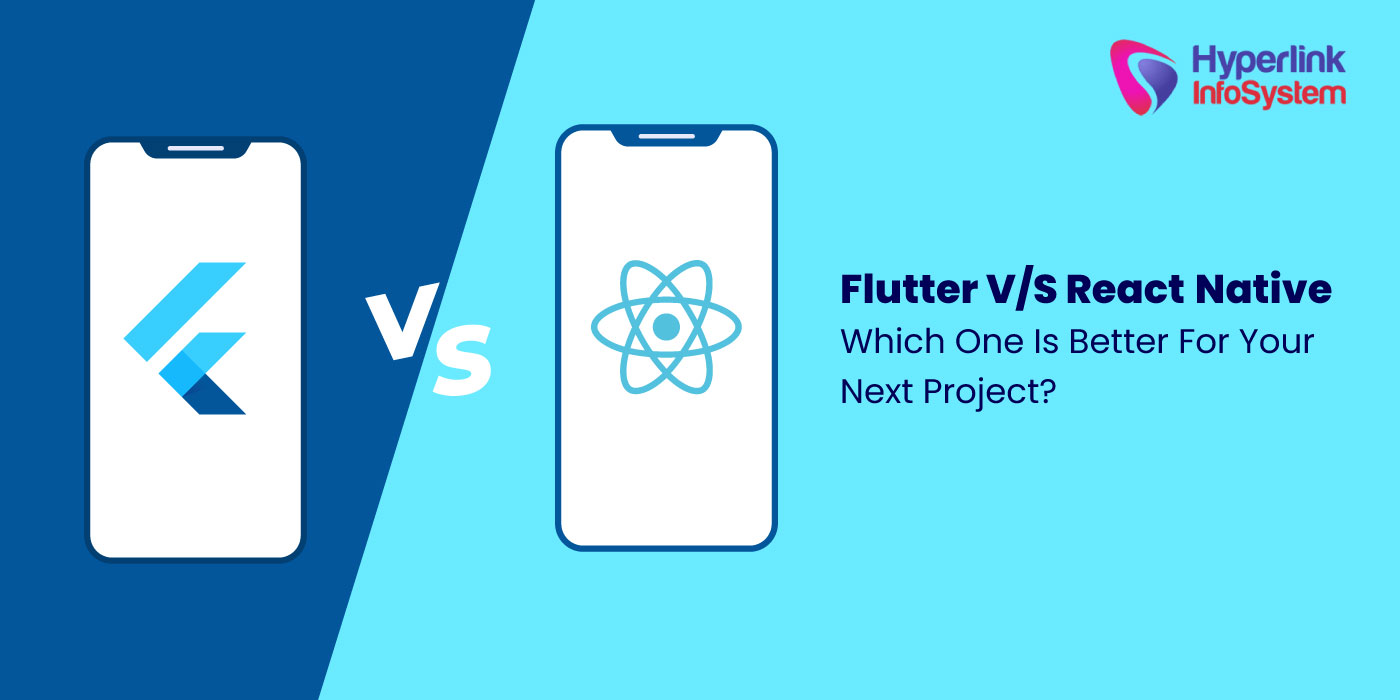In the last few years, the demand for mobile applications is skyrocketing. Every developer or app development company wants to provide the best app development technology. They tend to offer the app faster, smoother, and perfect the framework to create the mobile application. Hence, two names always come up- which are Flutter and React Native. But, among the two, which one is better?
The two most popular cross-platform app development technologies - Flutter and React Native have been the talk of the town for over a decade now. This
cross-platform app development created tons of buzzes and several comparisons because of its outstanding features.
We will explain their significant features, what they provide, and what not. We will show you a comparison: which will help you select the best cross-app platform for further mobile app development.
The Meaning of Flutter and React Native:
Definition Of Flutter
Flutter was initiated by Google and is a reactive cross-platform mobile development. It began in 2015 at the Dart developer summit for the usage of Google's dar language. Down the line, after three years, the first stable version of Flutter 1.0 was released and was available to use in developing applications such as iOS, Android, Linux, Maz, and many more. It was also applicable for the web with single code base use.
With the strong support of Google, Flutter is a top-up among the developers and became famous in a short period. One of the enormous features of Flutter is that it is a reactive framework and appears with a massive number of ready-to-use widgets. The applications have been compiled by using arm C/C++ library -so that it resembles machine language and provides a more reliable native performance.
Followings are the pros of Flutter for apps:
- Single the codebase for cross-platform development
- Advanced OS plugins with basic logic
- Better documentation and more enlightening
- Use of the same UI, even for old devices
- Better open source and free to use
Definition Of React Native
React Native was developed by Facebook and is an open-source Javascript framework. React Native has applied for generating a stable, native mobile application for Android and iOS platforms. The open-source is a JavaScript framework that develops upon the React library- to build mobile apps with a single codebase. It utilizes native elements rather than using web parts as making blocks. The highlight of
React Native is that it is a cross-platform feature, which enables you to write code once and can function on any platform. The most advantageous part is that it saves plenty of development time because of the utilization of a single JavaScript language for iOS and Android platforms to make mobile applications.
Followings are the pros of React Native:
- Enhance Performance
- Simplify UI for the Apps
- More Reliability
- Agile Prototype Applications
- Publish on Apps Smoothly
The Significant Differences between Flutter and React Native:
Yes, Flutter and Reactive Native are similar in many ways; however, they are very different in multiple ways.
A survey was conducted by developers selecting their preferable framework, in which Flutter was 3rd place with 69% and React Native was at 10% with nearly 58%.
For example, Flutter runs by using the Dart programming language in its single codebase, and when it comes to React Native, it uses JavaScript XML. Both Flutter and React Native languages are based on a C-style variety of syntax and support object-orientated principles. Therefore, it means that their fundamentals are similar when it comes to design as well as the code is quite alike.
Who Is Better: Architectural Form Of Flutter And React Native

Both have some benefits to offer to mobile application development. If we talk about Flutter first: It is a layered architecture. Flutter has created a simple hierarchy form of application that began with top-level root functions(platform-specific widgets). It is followed by primary widgets- that associate with the platform and explained layers. More than that, it shows the existing animation movements that assign API appeals to the base of the application. It is also called a Scaffold, which is operated by a C/C++ engine and is platform-specific embedded. If you need to distinct the presentation layer from company logic, you can examine executing Flutter BLoC. The architecture makes it more manageable for users, as well as junior
Flutter app developers to make complicated applications with tiny and easy components.
If we talk about the architecture of React Native and its support: React Native maintains a connection between the Native string and JavaScript thread. As per this functionality, the JavaScript code interacts with the program and the Native API. In iOS, React Native uses JavaScriptCore independently to control all codes; whereas in Android, the assortment of the JavaScriptCore within the application. Whilst- this might extend the native functionality, it also enhances the app size, appearing in performance problems or device intervals.'
Who Is Better: Performance Methods Of Flutter And React Native:
Like we mentioned before, both Flutter and React Native functions are much similar. They both are open-source, which implies that they are free to apply, libraries are managed well because of remarkable features. Therefore, it is likely to test apps built using Flutter and React Native frameworks, either virtually utilizing a built-in simulator on your computer for Android and iOS or any natively on your phone.
You will require an Apple computer if you are planning to build on iOS because the SDK is only possible on Apple computers. Users of Windows and Linux are not so lucky in this case. Moreover, you can develop Android development apps on any platform. Both frameworks practice hot reloading so you can execute adjustments and see them immediately. It makes development more productive because you do not have to keep holding and beginning your apps to see updates. The experience you get when applying an app- that was written in React Native and Flutter is a native experience for most developers.
Who Is Better: Flutter Or React Native For Generating Complex Apps?

React Native allows you to generate complex native apps, whereas Flutter is not that reliable ough to manage complex apps. However, we should not forget that React Native will only be possible when developers include native app development with React Native. When it comes to that stage, your application is more likely to be hybrid than cross-platform. The whole procedure of making complex apps with React Native does not only count Javascript but the usage of native development skills.
As per the survey, most of the startups prefer Flutter to generate MVP. It is an outstanding option to create more durable prototypes if you want to experiment more with them and decrease the price to execute. The bottom line is to create both Android and iOS prototypes with Flutter and interpret the outcomes in the industry. So, you can invest more and take it from easier to complex ones.
Final Thoughts
Both Flutter and React Native have their advantages and disadvantages, but if you need to choose one, now you will be able to choose the above points. It depends on what business purpose you are using and what functions you need to add to your apps while developing them. Hope, you select what's the best and secure for your mobile app development.

























